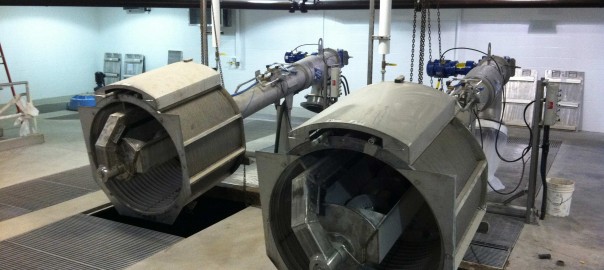
Automation in a wastewater treatment plant delivers a number of benefits that help your bottom line, the communities you serve, and the environment. Have you stopped to consider the different ways that automation could be used without your facility?
Water & Wastes Digest reports that about 25% of the wastewater processed in U.S. treatment plants is released without being treated. Torrential rains and flooding are reasons wastewater may be released without treatment. Equipment failures and leaking pipes and lines are other reasons. Automation is key in stopping these issues from occurring.
Ten Benefits Automation Brings to Wastewater Treatment
How does automation benefit a wastewater treatment plant? Here are the top ten reasons you should consider automating your facility.
Aids in Quality Control
You can use automation to boost quality control. When you have an automated system checking oxygen levels and ensuring the water that’s released meets or even exceeds the limits set forth by the EPA, you have the perfect partner in quality control.
When anything is wrong, the system alerts you. You can go to your computer and make adjustments as needed. The workers in those areas can shut down equipment if maintenance is needed to correct a problem before it gets out of control. Issues are taken care of quickly and correctly.
Constant Creation of Helpful Data
Automation establishes the data your facility needs to cut expenses, improve the treatment process, and maximize your manpower. The data can show positive gains or negative ones. Use the negative information to make improvements and fuel growth. Use the positive to present what’s working well with your stakeholders.
You’ll also get much-needed insight into changes in flow rates. You’ll learn when people in the municipality use the most water, when things are slow, and what adjustments can be made during these peaks. Use all of this data to achieve the other benefits gained from the use of automation, such as improving water quality, efficiency, and lowering expenses.
Diagnoses Possible Issues in Advance
When you have an automated system, you learn about possible issues in advance. There are warning systems and alarms to let you know when a machine isn’t working properly. If flow rates or water quality drastically change, the system alerts you. You may need to increase the pump speeds or increase aeration.
Improves Efficiency
The UN reports that 2.3 billion people live in areas where over 25% of the freshwater sources have been withdrawn. About 17% live in agricultural regions facing severe water shortages.
When you incorporate automation into your wastewater treatment plant, water treatment processes become more efficient. The U.S. has dozens of pollutants that are classified as toxic. When a plant has wastewater that contains those toxins, it cannot release the wastewater into the sewers. They must first treat that industrial wastewater. It’s an expensive undertaking.
Automated machines can separate the sludge and water. The sludge can then be removed and the water is able to go on for additional treatment. You end up separating a larger percentage of water from the solids so that more of the water goes back into the lakes, rivers, or storage tanks for reuse.
Increases a Plant’s Capacity
In the U.S., plants process more than 34 billion gallons of wastewater every day. When a plant is operating efficiently, it saves money. That money can be used to grow the plant’s capacity. In Ohio, one plant updated older equipment with automated control systems. That change increased the plant’s capacity from 53 million gallons per day to 70 million.
When your plant has a larger capacity, it lowers the risk of an overflow of raw sewage. Per the EPA, these fines start at $2,500 per day and go up to $100,000 daily.
Lessens the Need for Chemicals
Chemical additives are used to kill any remaining bacteria in the water. When you use chemicals like chlorine, they must evaporate from the water before it can be released to the environment or returned to the city’s water supply.
If you have an efficient wastewater treatment system with optimized aeration, the air bubbles create the oxygen needed for the bacteria to do their job effectively. They’ll remove more of the harmful contaminants, reducing the need for chemical additives.
Modernizes Older Equipment
Even if you cannot afford to upgrade all of your wastewater facility’s equipment, an automated system helps the equipment you have work as efficiently as possible. You can use data gathered from the automated control system to decide where your money is best spent on upgrades. It might be a pump one year and a grit removal system another.
Step by step, you can modernize your plant and end up with the most efficient wastewater treatment plant possible.
Optimizes Facility Staffing
Automation can do things that people used to do. That’s not a bad thing. You can redesignate your workers to other areas of the plant to perform more important tasks. Instead of sitting and watching wastewater coming out of a pipe to see if there is a change in the flow rate, your employees could be engaged in more meaningful activities like inspecting, maintaining, and cleaning equipment.
Provides Real-Time Visibility
When your plant is automated, you have a constant stream of real-time data at your fingertips. You know if flow rates are increasing or decreasing during certain hours, on specific days, or during specific months. You can use the information to make data-driven decisions.
Suppose you’re seeing an increased flow rate that has put you near capacity several times. You could use this information to discuss the need for an expansion in your district. When you lay out the cost of expansion vs. the potential fines you face if you release untreated sewage, the expansion becomes a necessity that the district can’t argue against.
Reduces Energy Consumption and Costs
Finally, when you have an efficient wastewater treatment system, it reduces your energy consumption. That lowers your monthly expenditures. Tests show that automation can reduce energy consumption by 30% without needing to replace older equipment or reduce the water quality.
An Expert in Wastewater Treatment Can Help You Design the Best System and Upgrades Plan
The Sharp Biological Nutrient Removal (SharpBNR) process control system is an energy-efficient automated system. It has system status and alarm functions that you can adjust from a computer or the HMI. You can also connect it to a SCADA system for comprehensive efficient operations. Monitor Dissolved Oxygen and Oxygen Reduction Potential and have the system adjust aeration as needed.
That’s just a small sampling of all that an automated system allows you to do. Contact Lakeside Equipment to talk to an expert. Discuss your goals and your budget, and let our team help you decide the best steps to take.





